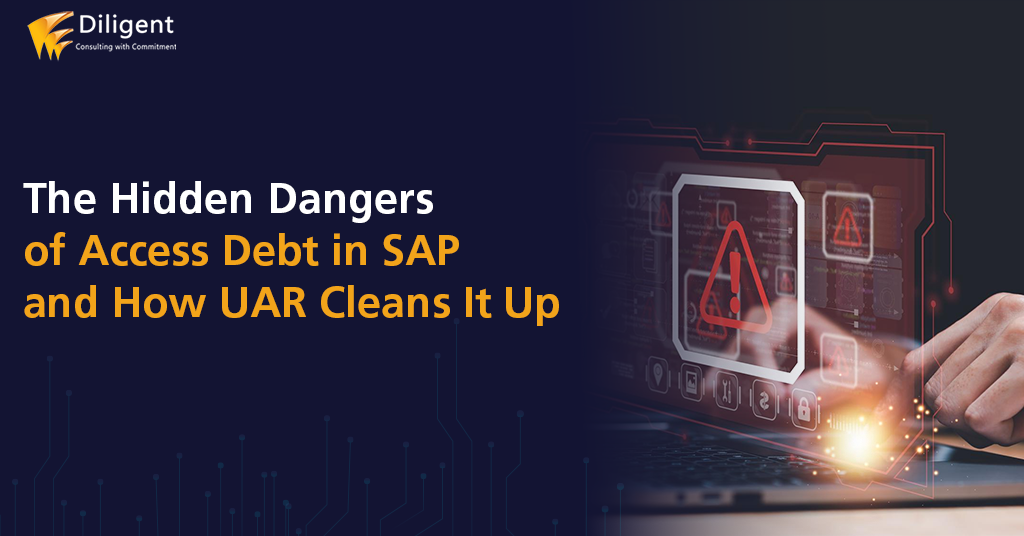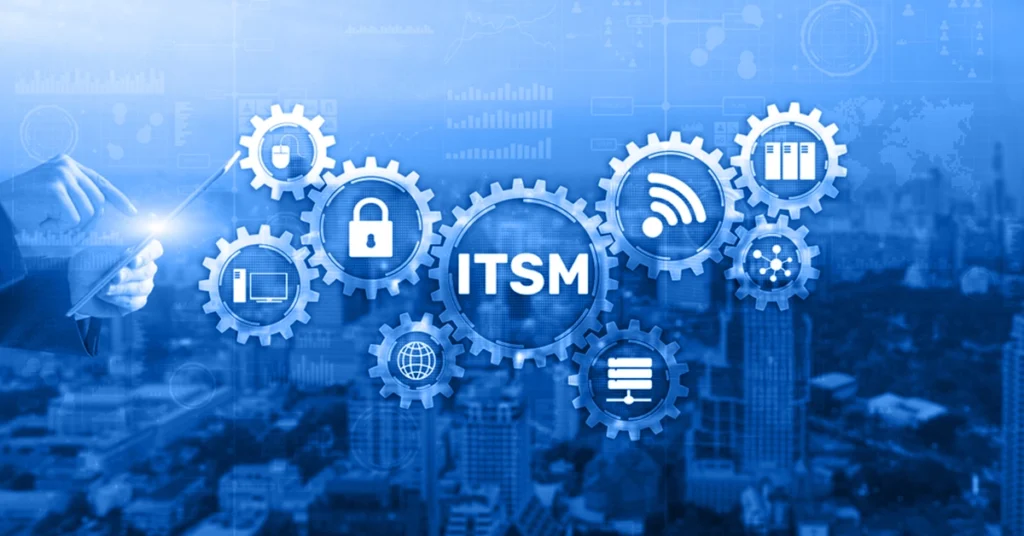Every organization running SAP understands the pace of change. New projects, mergers, shifting teams, temporary contractors, and system upgrades continuously reshape who needs access to what. Yet access rarely evolves with the same discipline as business processes. Dormant accounts linger, orphaned roles remain assigned, and outdated privileges quietly accumulate.
Over time, these neglected access rights pile up into something far more dangerous than clutter. Much like technical debt in software, this “access debt” grows unnoticed until it starts slowing down audits, weakening controls, and exposing the enterprise to insider threats. Addressing it requires more than cleaning up on demand. It calls for continuous oversight and a smarter way to govern access without slowing down transformation.
Access Debt – The Silent Risk in Complex SAP Landscapes
permissions within SAP systems. It often begins innocently. An employee moves into a new role but keeps old authorizations. A contractor finishes a project but their account remains active. A new module is rolled out, yet legacy access rights are never reviewed.
While each instance seems minor, together they create a systemic issue that impacts governance, security, and compliance. The debt builds layer by layer, quietly weakening the control environment.
How Access Debt Builds
- Role changes without revocation: Employees collect access as they progress through roles.
- Contractors and vendors: Temporary accounts are rarely de-provisioned promptly.
- Legacy permissions: Old authorizations remain even after business processes change.
- Project-driven access: Urgent deadlines lead to shortcuts that are never revisited.
Why It Matters
- Creates pathways for fraud and insider misuse.
- Makes it harder to enforce segregation of duties (SoD).
- Weakens confidence in compliance certifications.
- Increases audit preparation effort and cost.
SAP environments are particularly prone to access debt because of their size, complexity, and reliance on cross-functional roles. What remains unseen in day-to-day operations becomes highly visible when auditors demand proof of least-privilege compliance.
Consequences That Linger Beneath the Surface
Access debt is like pressure building in the background—unnoticed until it causes disruption. Its consequences extend across multiple layers of risk and operations:
- Security Exposure – Dormant and orphaned accounts present opportunities for malicious insiders or external attackers. They provide “ready-made” entry points that can be exploited without triggering alarms.
- Compliance Headaches – Frameworks such as SOX, GDPR, and ISO 27001 require documented reviews of user access. Excessive or outdated entitlements make it difficult to demonstrate proper control, exposing organizations to findings, fines, or reputational damage.
- SoD Violations – Excessive authorizations increase the likelihood of toxic combinations, such as the ability to both create and approve vendor payments. These conflicts undermine financial integrity and open doors for fraud.
- Audit Burden – Access debt forces teams into longer review cycles, reactive fixes, and scrambling to produce evidence. What should be a routine certification process turns into an operational drain.
- Operational Inefficiency – The more access debt accumulates, the harder it becomes to distinguish legitimate permissions from excessive ones. IT and audit teams spend disproportionate time cleaning data instead of managing risk.
In short, access debt erodes trust in access governance. It makes compliance harder, security weaker, and business processes slower.
Why Legacy Approaches Can’t Contain Access Debt
Many organizations still rely on legacy practices—manual reviews, spreadsheets, and siloed systems—to govern access. These approaches often create the illusion of control while leaving dangerous gaps untouched.
- Manual Reviews – Spreadsheets and email approvals require human attention at every step. They are slow, prone to oversight, and unsustainable across growing SAP landscapes.
- SoD-Only Focus – Legacy governance models often emphasize segregation-of-duties checks. While important, this narrow focus overlooks risks like dormant accounts or excessive privileges that don’t create direct SoD conflicts but still pose real threats.
- Fragmented Oversight – With multiple SAP systems—on-premise, cloud, and hybrid—visibility becomes fragmented. Teams struggle to consolidate information, leaving blind spots that access debt thrives in.
- Audit Pressure – Incomplete audit trails and reactive fixes force organizations into firefighting mode. Instead of proactive assurance, they spend resources trying to patch gaps before the next certification.
UAR as the Strategic Clean-Up Framework
Access debt cannot be addressed with occasional, manual checklists. It requires a disciplined framework that continuously validates who has access, why they have it, and whether it remains appropriate. User Access Review (UAR) provides exactly this foundation. It transforms reviews from a periodic compliance exercise into an intelligent, workflow-driven process that actively reduces risk.
How UAR Works in Practice
- Automated Periodic Reviews – Traditional review cycles that once took weeks of manual coordination are automated into workflow-driven tasks. Reviewers are guided through approvals, reminders, and escalations, cutting administrative effort by up to 65% while ensuring no step is missed.
- Usage and Risk Prioritization – UAR does not treat every entitlement equally. By analyzing transaction usage, SoD conflict levels, and business relevance, it highlights high-risk access for deeper scrutiny. This prevents wasted time on low-impact entitlements and accelerates corrective action where it matters most.
- Role Content Validation – Access debt often hides in outdated or poorly maintained roles. UAR evaluates single and composite roles for continued business relevance, helping teams identify redundant authorizations and rationalize their role design.
- Control Effectiveness Checks – It’s not enough to assign mitigating controls—UAR validates their strength over time. If a control becomes outdated or insufficient, it is flagged for reassessment, preventing reliance on ineffective safeguards.
- Audit-Ready Traceability – Every step of the review process—from request, to approval, to sign-off—is logged with full traceability. This creates a living audit trail that satisfies regulatory expectations under SOX, GDPR, and ISO frameworks without forcing teams into reactive evidence gathering.
- SAP-Native Deployment – Because UAR is built natively on SAP BTP, deployment is faster, usability is higher, and integration with other SAP tools is seamless. This reduces the friction often associated with third-party governance solutions and ensures faster adoption across the enterprise.
Turning Debt into Strength – The Outcomes of UAR and UAS
The real power of addressing access debt lies not only in remediation, but in how it transforms security, compliance, and business agility. When UAR is paired with User Access Shield (UAS), organizations create a governance cycle that is both preventive and corrective: periodic structured reviews to clean up accumulated debt, and real-time monitoring to stop it from building again.
Measurable outcomes delivered by UAR and UAS:
- Risk Reduction: Organizations report up to 80% fewer access-related incidents.
- Efficiency: Automated workflows reduce admin effort and lower costs by up to 40%.
- Continuous Assurance: UAR manages scheduled certifications, while UAS prevents new SoD conflicts in real time.
- Audit Confidence: Clean, traceable access data transforms audits from stressful exercises into routine checks.
- Business Agility: Access aligned with responsibilities supports digital transformation without governance delays.
Conclusion
unaddressed, they accumulate into a burden that weighs down every compliance cycle and amplifies insider and outsider risks.
Legacy models can’t keep pace with the complexity of modern SAP landscapes. Manual reviews and siloed oversight allow risks to slip through the cracks, forcing teams into a cycle of reactive fixes. Breaking this cycle requires a shift from periodic clean-ups to continuous, intelligent oversight.
By embedding User Access Review (UAR) as the structured clean-up engine and reinforcing it with User Access Shield (UAS) for real-time monitoring, enterprises create a governance model that is both preventive and corrective. Access no longer piles up as unmanaged debt—it is continuously reviewed, validated, and aligned to actual business needs.
The result is more than compliance. It is a cleaner, leaner SAP environment where governance strengthens resilience, audits are streamlined, and teams operate with greater agility. Access debt becomes an opportunity to elevate control, efficiency, and trust. With UAR and UAS, organizations don’t just manage risk, they build a foundation for secure growth in the future.
FAQs:
- What is access debt in SAP?
Access debt in SAP refers to the accumulation of outdated, excessive, or unused permissions over time. It increases insider risk, weakens segregation of duties, and complicates compliance reviews, especially during audits.
- How does Diligent’s UAR help clean up access debt?
Diligent’s User Access Review automates periodic certifications, validates role relevance, and prioritizes risks based on usage. It eliminates excessive or dormant access, enforces least privilege, and ensures reviews produce complete, audit-ready evidence.
- Why is access debt dangerous for compliance teams?
Access debt makes it harder for compliance teams to prove least privilege, validate SoD enforcement, and maintain complete audit trails. These gaps increase audit pressure, expose organizations to findings, and raise regulatory risks.
- How do UAR and UAS work together to reduce SAP risks?
UAR provides structured, periodic access reviews, while UAS delivers real-time SoD conflict detection. Together, they give continuous assurance, preventing access debt from returning and strengthening insider threat defense across SAP systems.
- What measurable benefits does UAR deliver for businesses?
Businesses using Diligent’s UAR achieve up to 80% fewer access-related incidents, reduce admin effort by 65%, and cut audit preparation costs by 40%, while improving governance and accelerating digital transformation securely.



